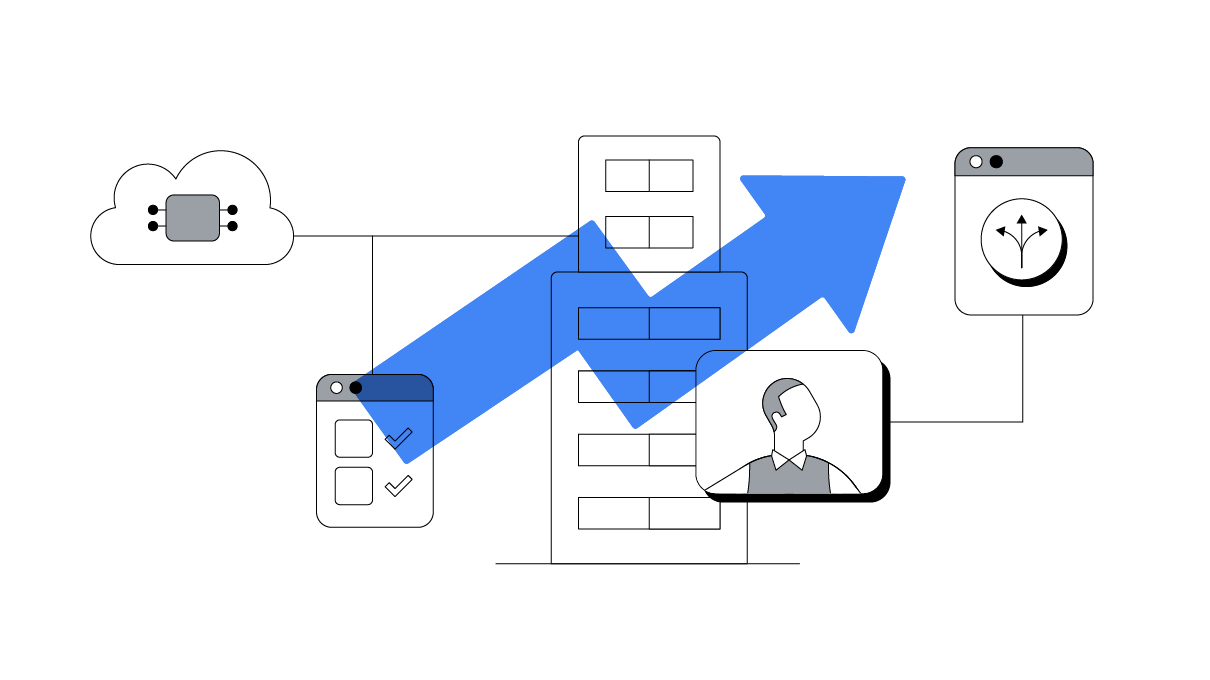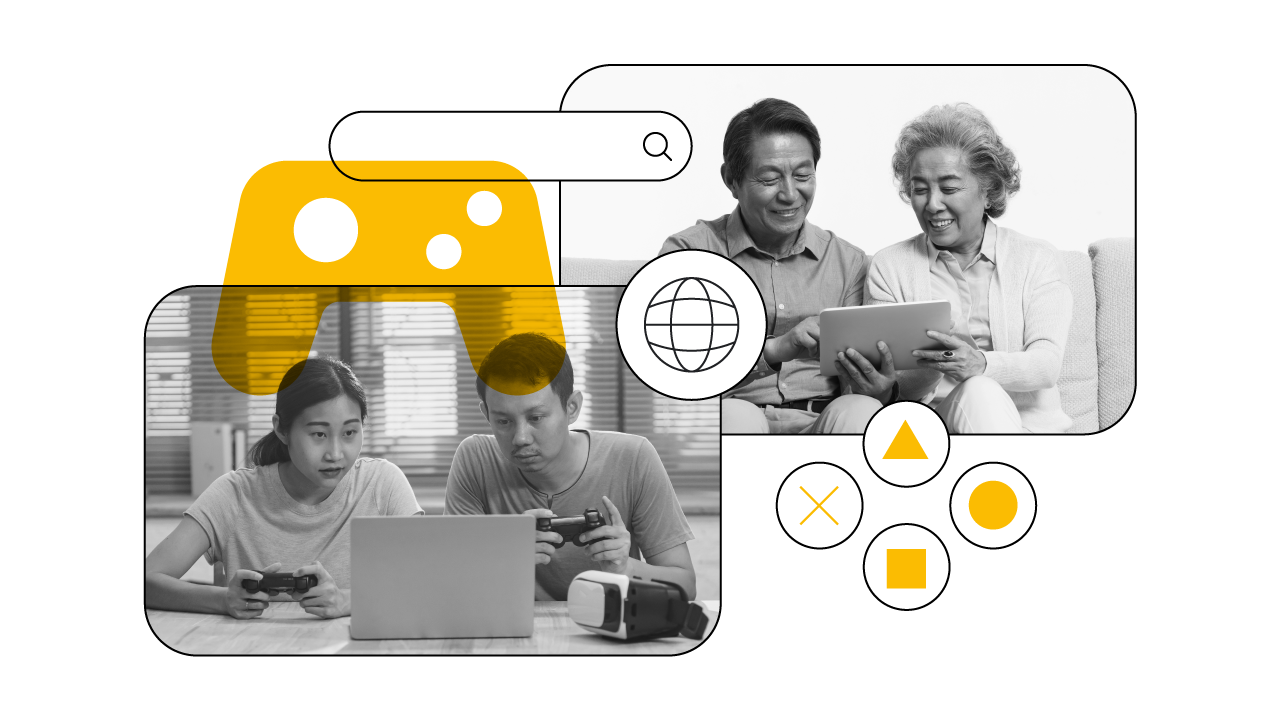The Update: How Google is helping businesses respond to COVID-19
Guests
Published
June 2020Share this page
The Update: How Google is helping businesses respond to COVID-19
June 2020In the first video of our series, The Update, Google’s Global VP of Ads Marketing Marie Gulin-Merle talks to VP and GM of Ads at Google Jerry Dischler about the state of the digital ad industry in the wake of the disruption brought on by COVID-19. They share what they’re hearing from industry leaders, as well as how the Google Ads product roadmap is pivoting to help businesses meet the changing needs of customers.
Editor’s note: We acknowledge the hard times the world is going through, from COVID-19 to racial injustice. Please visit The Keyword to learn more about Google’s response to COVID-19 and how we stand with the Black community.
Hi everyone.
People around the world have felt the impact of the COVID-19 crisis,
and over the past few weeks
we've grieved together as the Black community has endured more senseless acts of violence.
At Google, we stand against racial injustice.
We believe that equality is a basic human right,
and that everyone should be heated treated equally, regardless of background or race.
We're working to listen to your perspectives, and we’re learning from businesses large and small.
We're committed to helping you in your recovery.
And more than ever, we’re now investing in organizations and nonprofits fighting racial injustice around the world.
The past few months have been incredibly challenging, and we still have a long road ahead of us.
We want to express our thanks to all of you as partners,
whether brands or agencies—thank you for being a part of our community.
We're here to help as we all plan for a better future together.
My name is Jerry and I lead product development for Google's ad products.
I've learned a lot from meeting with customers and partners around the world,
virtually of course,
to hear about how COVID has impacted their businesses.
It's clear that there are things that we can do to help, and we want to help,
and so the focus of my role and my team's role has really shifted since the break of COVID-19,
to identify new product ideas and best practices
to help our customers get back on their feet.
In this episode, Jerry Dischler talks to me about
the recent changes we made to Google Ads in response to COVID-19.
As it comes to the business, Jerry, can you let us know about what you see
about businesses coping with COVID?
If you take a look from the consumer perspective, interests are shifting.
One beauty brand is now focusing on skin care rather than makeup,
which was historically their most popular category.
Or, real estate companies are now offering extensive virtual tours
because they can't bring people directly into homes.
Now, a lot of businesses particularly in the retail sector are finding that online is not an optional side business,
but an important focal point for their business.
And at times like these, those with strong online presences are doing really well
relative to the competition.
And how have you and your team have been thinking about responding to COVID?
What we did was we identified three high-level principles for the product roadmap
in terms of how to respond.
The first is to build for what customers need right now.
So we took a look at our product roadmap and said,
“How can we make resources available in order to respond during a time of crisis?”
We wanted to make an investment in automation tools
to help customers who now have less time and resources
to invest in creative design and targeting and things of this nature.
We thought it inappropriate to ask advertisers to do heavy lifting,
like doing migrations or campaign overhauls at this time.
Building for customers now let us to pull forward our plans to open up inventory
on shopping.google.com for more products and customers.
On not asking for heavy lifting, we had some migrations scheduled
and then finally, in investing in automation tools like responsive search ads,
Smart Bidding and data-driven attribution.
These are areas of the product roadmap where we invested more resources.
Do you have any favorite tools to help understand how companies can be helpful
and respond to their customers’ needs?
So I've been a big fan of Google Trends for a long time,
and we have released a new data interactive on Think with Google.
What that does is it shares insights on what people are searching for
during this time of need.
Although your brick and mortar location may be closed,
your customers who are sheltering in place haven't stopped shopping
—they're just looking for different things.
We're seeing in some cases rapid spikes and sharp declines in consumer demand
for various products and services.
So we want you to help uncover pockets of opportunity by highlighting categories of
products and services with high volumes of queries that are also growing at a fast rate.
Can you talk about bringing free listings to Google Shopping?
The retail sector has been heavily affected by coronavirus,
and without physical stores,
digital commerce has become a lifeline for businesses.
Consumers are searching beyond essentials
for things like toys, and apparel and home goods et cetera,
and this is an opportunity for businesses to reconnect with consumers,
but many can't afford to do so at scale.
So in light of these challenges, we have made it free for merchants to sell on Google,
via the Google Shopping property.
For shoppers, it means that they get broader selection
at a time when it's often hard to find products in stock.
For advertisers, this means additional traffic beyond what you can get from your paid campaigns.
But if you're an existing Merchant Center and Shopping ads user,
not only do you not have to do anything to take advantage of the free listings,
but you also are getting a boost on top of the very high effectiveness that you're already getting
from your shopping investments.
For new users of Merchant Center, we’ll continue to work to streamline the onboarding process
over the coming weeks and months.
But if you'd like, you can sign up now and start taking advantage of this additional free traffic.
Tell me about updates to local inventory ads?
Partially due to COVID, curbside pickup has become an emerging behavior.
Consumers are limiting their time in stores, and want contactless store pickup experiences.
Merchants who have local inventory, and use our local inventory ads product,
can already highlight whether a product is available for store pickup.
Soon, retailers will be able to indicate that they can offer
curbside as a store pickup option, right in Shopping ads.
So can you talk about automation?
How does it help to deliver results, especially for people who are short on time?
I can absolutely empathize.
We have two young kids at home who are not in school right now.
And so it’s a constant struggle.
So what I would recommend is that you use Google's automation tools.
As search behavior changes and evolves in rapid cycles, Smart Bidding is built to handle that
If your volume is changing
and your conversion rates are relatively consistent to what you've seen historically,
you can use Performance PlannerM or budget and target simulators
to understand your potential.
But try not to forecast too far beyond seven days though,
and reassess often because of the
constantly changing environment.
If your conversion rates are changing,
monitor how quickly they're changing.
Our automation handles gradual changes well,
but sudden drops in conversion rate may necessitate new performance targets,
just like if you were changing bids manually.
Remember to use top signals
for maximum insights into your performance.
Smart Bidding delivers insights that you can use
elsewhere in your campaigns.
It's also possible to use automation
to guide you through times of turbulence like this,
with your automated creative strategy.
Like in responsive search ads,
or even your App campaigns
where these adjustments are handled automatically
in order for you to achieve your business objective.
Also because businesses of all sizes are strapped for time and resources,
and in-person video is no longer practical, we've also been investing in Video Builder.
For businesses who don't have resources to create videos from scratch,
Video Builder can help by animating static assets—images, text, and logos—
with music from YouTube's library.
And you can quickly generate a short video of 6 or 15 seconds.
For example, Havenly, an online platform that offers interior design services,
has been using Video Builder.
And free tools like this help them continue to create new and fresh content at a time
where they can't film professional content.
Well, thank you Jerry for all the insights and inspiration.
Do you have any final thoughts you’d like to share with us?
This is a really difficult time for all of us, and I really understand that.
And at Google, we're committed to helping you and your business
weather the storm and then thrive and succeed.
First, we would love to hear your input, and your help.
We would love to magnify the creativity that you have in dealing with these situations,
and so we would love to hear what the new use cases are that we can support.
The second way that we're here to help is by making it easier for you to make
advertising investments that allow you to achieve your business goals.
So taking a look at our automation, our planning tools, our insights and things like that
is really important.
And then finally, I hope that all of you stay healthy and safe, and I hope to see you soon.
Others are viewing
Marketers who view this are also viewing
-
Report
![]() Report
ReportThe retail road to recovery: Tips on how retailers can better connect to consumers
-
Perspective
![]() Perspective
PerspectiveHow to be the partner your clients deserve in times of crisis
-
Article
![]() Article
ArticleCrisis marketing: How brands are addressing the coronavirus
-
Article
![]() Article
ArticleLost and found: How 3 travel brands grew bookings with AI-driven marketing
-
Perspective
![]() Perspective
PerspectiveHow future-ready businesses are building for tomorrow
-
Article
![]() Article
ArticleHow people decide what to buy lies in the ‘messy middle’ of the purchase journey
-
Article
![]() Article
ArticleThe psychology of consumer behavior: Habits that are set to stick post-pandemic
-
Article
![]() Article
ArticleScoring with gamers: New findings on HTML5 players that’ll grow gaming revenues








